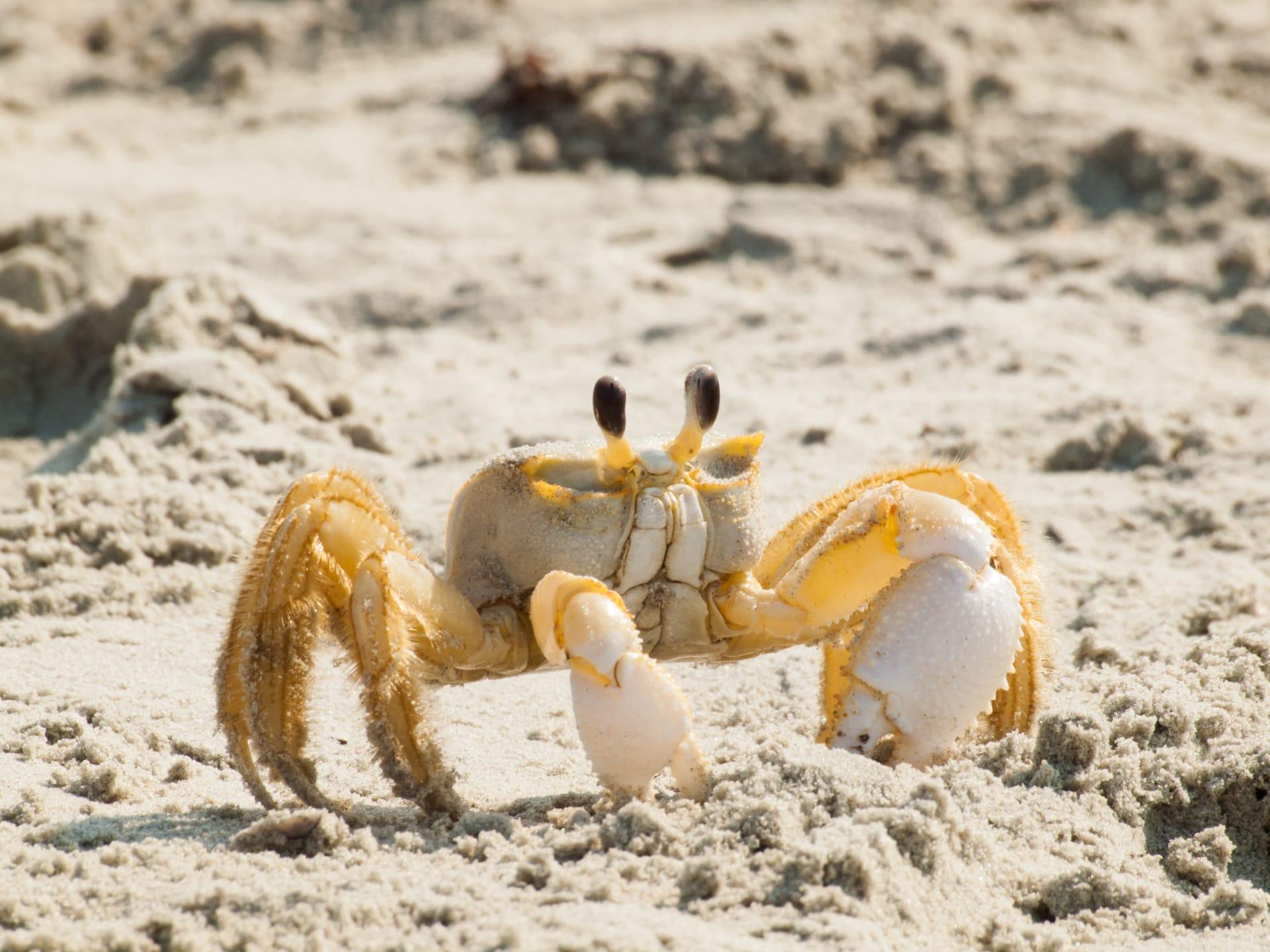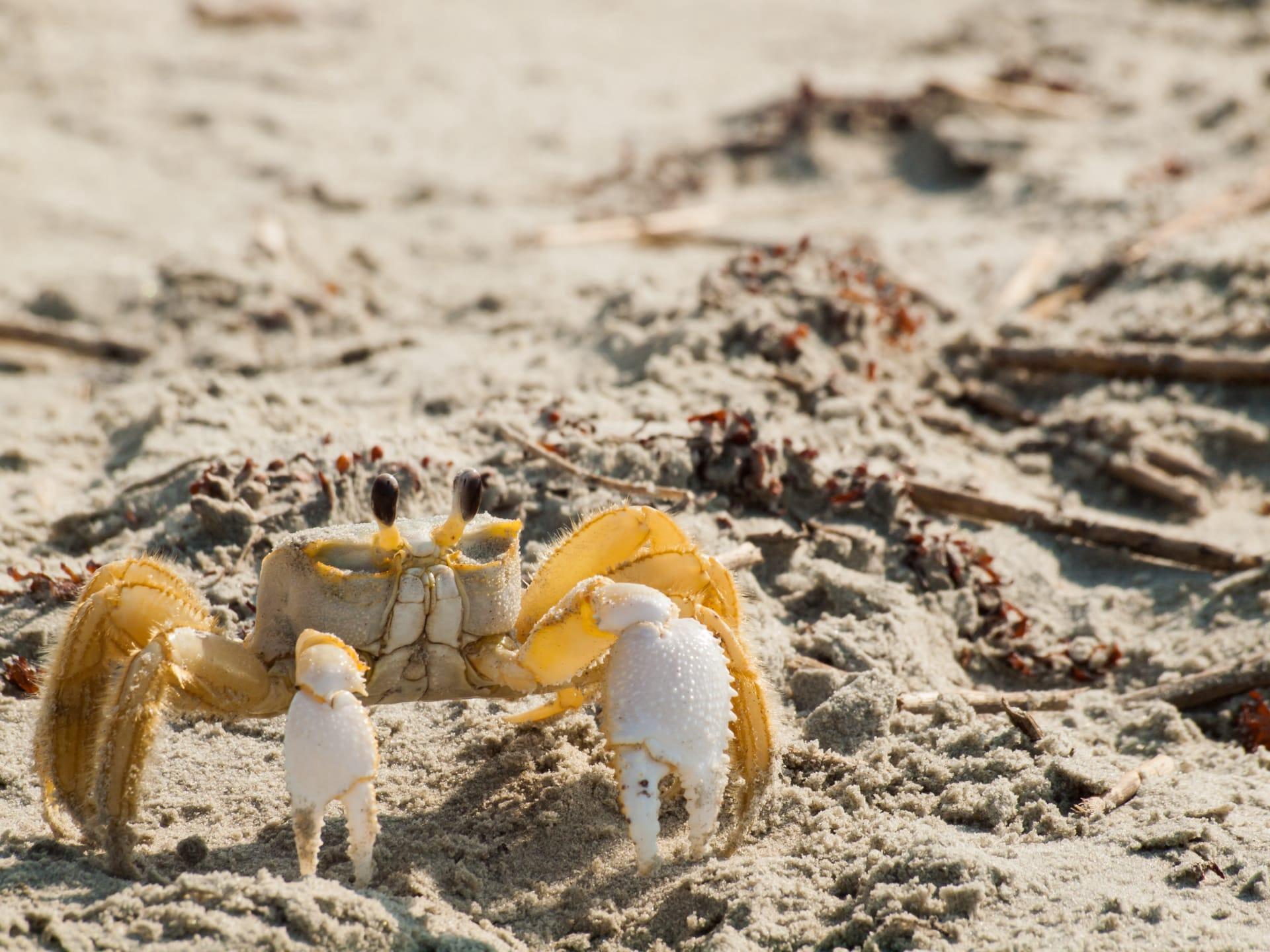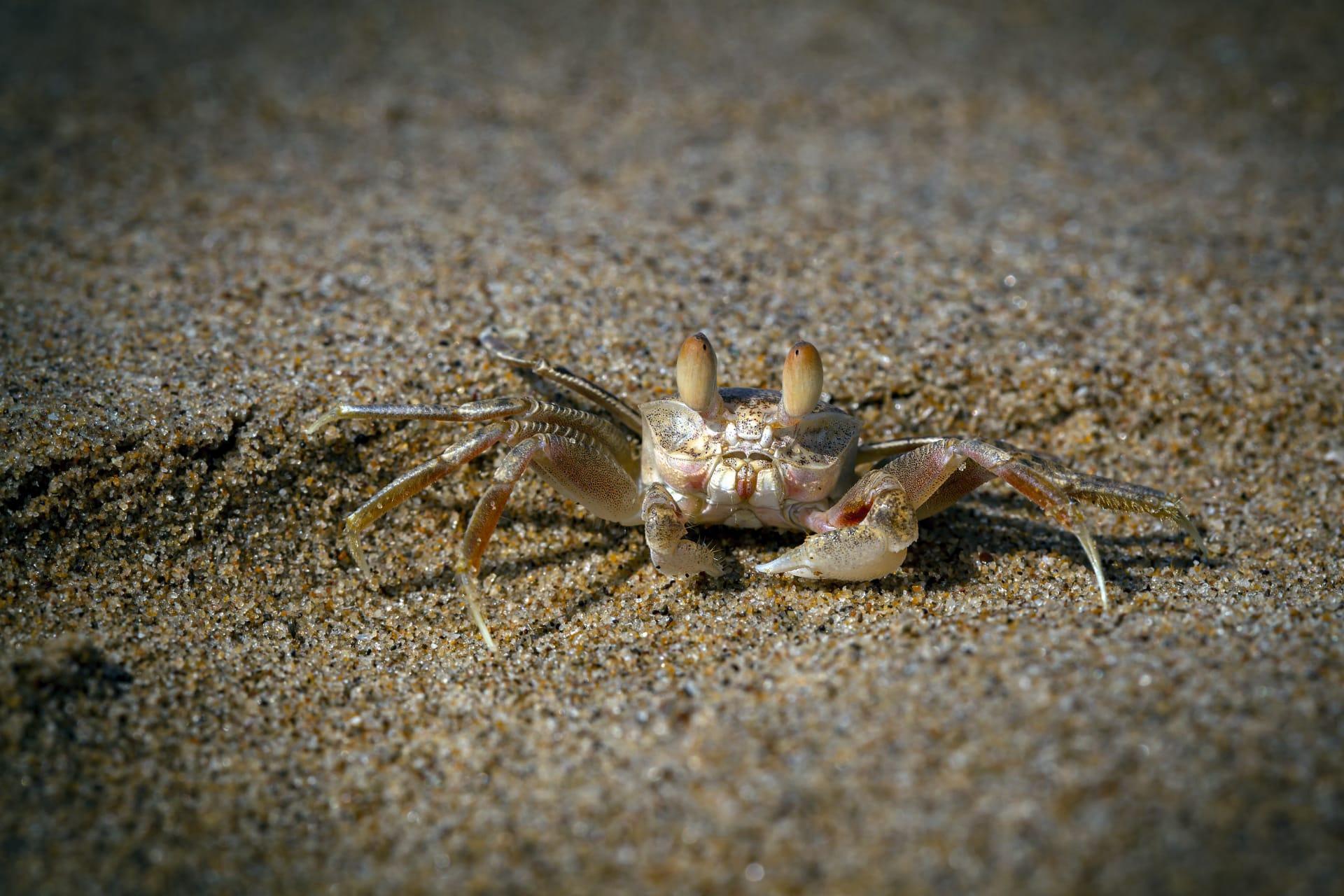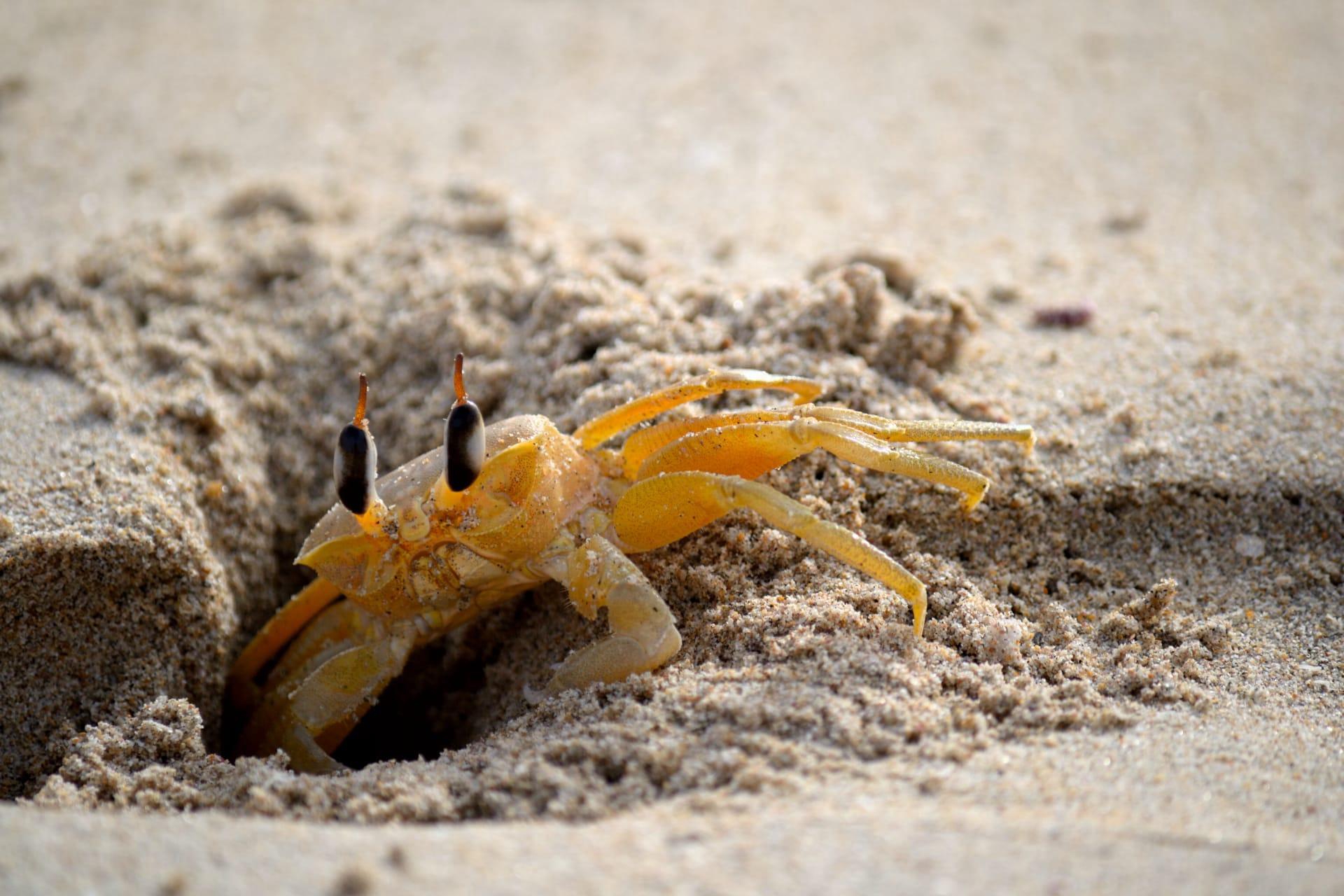Crab Characteristics
- Home /
- Mini Encyclopedia /
- Animal /
- Crab Characteristics
1
Celebrated for their unique appearance and fascinating behaviors, crabs are a diverse group of crustaceans found across the globe. These creatures range in size from the tiny pea crab, barely a few millimeters in length, to the imposing Japanese spider crab, whose leg span can stretch up to 12 feet (3.7 meters). Most crabs, however, average a more modest size, typically around a few inches in diameter. The lifespan of a crab varies significantly by species. Some small land crabs live only a few years, while larger marine species like the Alaskan king crab can live up to 30 years under the right conditions.
The most distinctive organ of a crab is undoubtedly its claws, or chelae. These are not only powerful tools for defense and dominance displays but also versatile instruments for feeding. Crabs use their claws to capture prey, tear it apart, and bring it to their mouths. They are capable of exerting significant force, with some species like the coconut crab having the strongest pinch of any crustacean. This gripping power is crucial for their survival, aiding in hunting, foraging, and even mating rituals.

2
Question: Why do crabs walk sideways?
Answer: Crabs walk sideways due to the unique structure of their legs. Their legs are arranged in a way that makes lateral movement more efficient. The jointed legs of crabs are hinged to move sideways, which gives them stability and speed when maneuvering through their habitats. This adaptation is particularly useful for navigating the rocky and uneven terrains of ocean floors or the forest undergrowth. Additionally, moving sideways allows crabs to keep a low profile, making it harder for predators to spot them. This peculiar gait is not only a hallmark of their identity but also a brilliant evolutionary strategy for survival in diverse environments.

3
Crabs are known for their distinctive way of moving, characterized by a scuttling motion. They are agile creatures, capable of moving quickly in a sideways direction. This sideways locomotion is facilitated by the unique structure of their legs, which are more adapted for lateral movement than forward or backward motion. Their speed varies among species, but some crabs can reach impressive speeds, particularly when fleeing from predators or chasing after prey.
Regarding feeding habits, crabs are generally opportunistic feeders, with diets varying widely among species. Most are omnivores and consume a mix of plant and animal matter. Their menu often includes algae, mollusks, small fish, and detritus. Some species are more specialized; for example, the fiddler crab primarily feeds on algae and detritus, sieving it from the mud with its claws. Crabs use their powerful claws to capture and tear apart their food, while their smaller appendages, called maxillipeds, assist in handling and consuming the food.

4
Crabs inhabit a wide range of environments, showcasing remarkable adaptability. Many species are found in the ocean, from the intertidal zone to the deep sea. Some crabs, like the fiddler crab, thrive in mangroves and mudflats, while others, such as the hermit crab, are common in coral reefs. There are also freshwater crabs and terrestrial species that live in forested areas, only returning to the water to breed. The diversity of habitats they occupy is a testament to their evolutionary success.
Crab reproduction involves a fascinating array of behaviors and strategies. Most marine crabs release their eggs in the water, where they hatch into planktonic larvae. These larvae go through several stages before settling down and transforming into juvenile crabs. Terrestrial and freshwater crabs have different strategies, often retaining the eggs until they hatch into fully formed juveniles. Mating rituals among crabs can be complex, with males often engaging in displays of strength or using their large claws to attract females.

5
Book: "The Secret Life of Crabs" by James H. Hunt, published in the United States, 1998. This engaging book offers a journey into the world of crabs, exploring their diverse habitats, behaviors, and ecological roles. Hunt delves into the fascinating aspects of crab biology and behavior, from their unique locomotion to their complex mating rituals. The book is well-researched and written in an accessible style, making it a great read for both crab enthusiasts and general readers interested in marine life.
Book: "Crabs: Nature's Marvellous Movers" by Sandra Markle, published in the United Kingdom, 2005. Markle's book is a captivating exploration of the crab's unique way of life. Focusing on various species from around the world, it examines their adaptations for survival in different environments. The book is filled with vivid photographs and interesting facts, making it an informative and visually appealing read for anyone curious about these fascinating creatures.